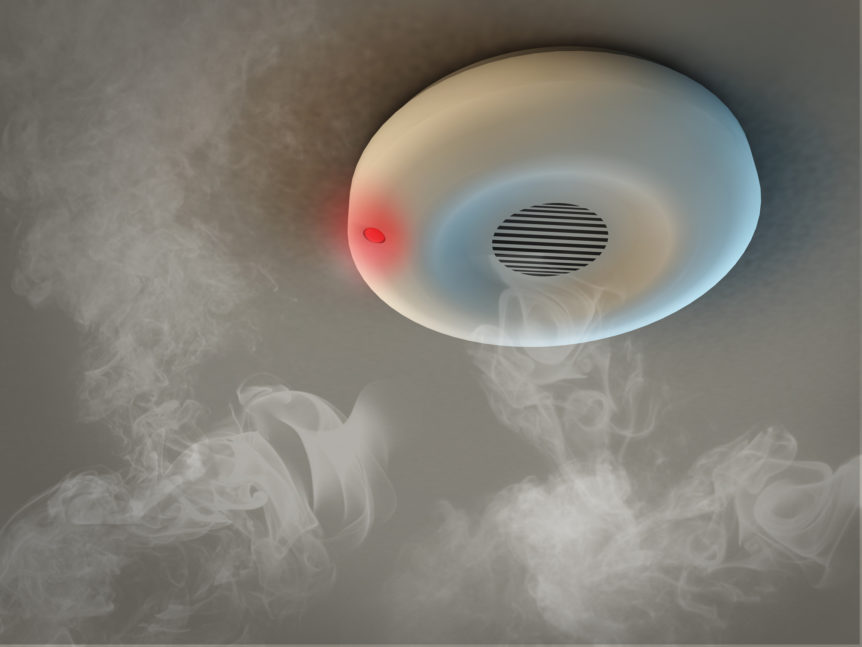Did you know that 7 people die every day from fires? What about the fact that approximately 20% of all fire deaths occur from inadvertent smoke inhalation due to a dysfunctional smoke alarm inside the structure?
You may have already heard that having an operational smoke detector in a building can cut the risk of death by fire inside it by over 50%. What many people don’t know, however, is what clever machinery makes these devices “tick”.
How Does a Smoke Detector Work?
From the smoke detector device first invented and patented by Francis Robbins Upton in 1890, to the varied methods and diverse prototypes of other smoke-detecting machines that followed his through the years, to the large pool of effective and reliable modern smoke detectors of today, the fire detection industry has had a long and storied history.
Because of this, it’s important to remember that not all smoke detectors are the same. Below, we’ll explain the differences and science behind the two major types to help you better understand how a smoke detector works.
Ionizing Smoke Detectors
This is the most common and least expensive type of smoke detector. Inside these disc-shaped devices, there are two parallel placed metal plates.
On one of the plates is a small amount of radioactive element source. This radioactive element source creates a small amount of radiation that, in turn, creates movement in the electrons between the plates. That movement forms an electric charge that runs between both plates. As long as the charge is flowing, the alarm will remain silent.
That’s where smoke comes in. Smoke particles absorb the radiation, which interrupts the electric charge within the detector. When the electric charge stops flowing between the plates, the alarm is triggered.
This alarm alerts occupants of the space of the smoke danger, allowing them to respond or evacuate according to the severity of the fire.
Benefits of ionizing smoke detectors is that they are simple to manufacture, inexpensive to purchase, and can operate for long periods of time on a battery.
One particular drawback of this type of detector is that the same technology that detects smoke from fires can detect smoke from cooking. You may even know someone who’s admitted to disabling his or her smoke detector because of their frustration over too many false alarms.
You should always remember: having a disabled smoke detector is like having no smoke detector at all!
Photoelectric Smoke Detectors
A photoelectric smoke detector works differently. Inside of the device, an LED light and a photosensor (light sensor) sit at a 90-degree angle from one another.
In normal conditions, the angle of the light is undetectable by the sensor. However, when dark smoke particles (produced from fire) enter the detector, they reflect the light from the LED within the device at random angles as the smoke rises and moves around in its gaseous state. This, therefore, interrupts the usual placement of the light beam and directs it to the photosensor, triggering the device.
When this happens, the alarm sounds to inform building occupants, allowing them to respond effectively and evacuate if necessary.
Now you know.
Hopefully in the future, when someone asks, “How does a smoke detector work?” you can be the first to let them know. More importantly, however, knowing about how both types of detectors (ionizing and photoelectric) work can help you determine which is best to install in your own commercial space.
For example, if there is the possibility of producing smoke by cooking in your building, it might be a wise idea to use photoelectric smoke detectors. That way you can avoid the false alarms triggered by clear cooking smoke when using ionizing detectors.
Remember that half of the nearly 2,600 deaths from fires that will occur each year could be prevented by a working smoke alarm. Don’t wait to install one!
Contact us today to have commercial smoke detectors installed in your space. They will save lives!

